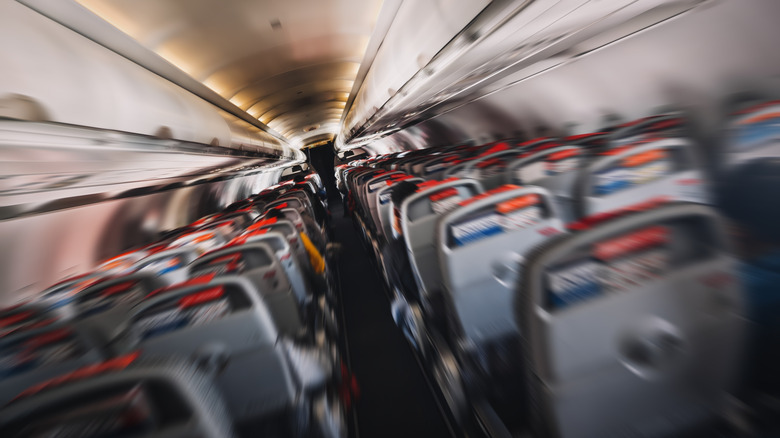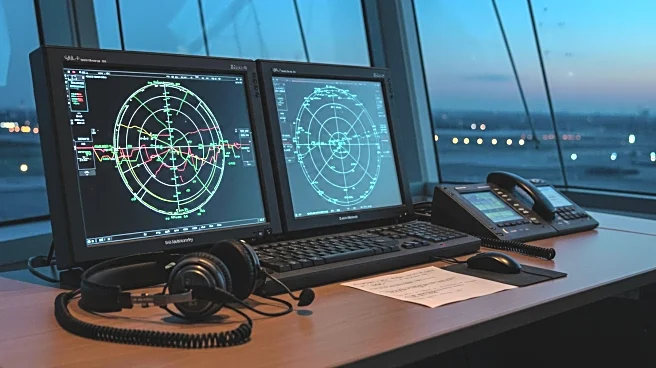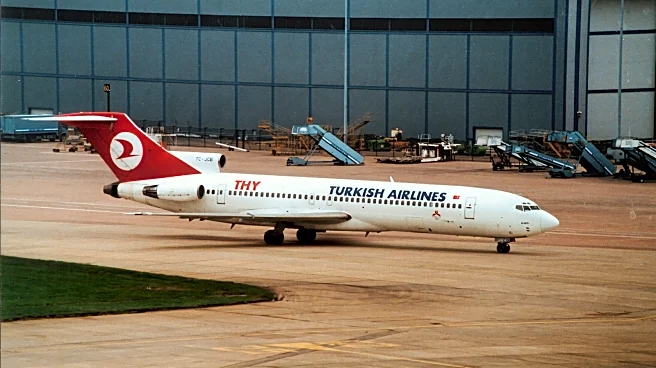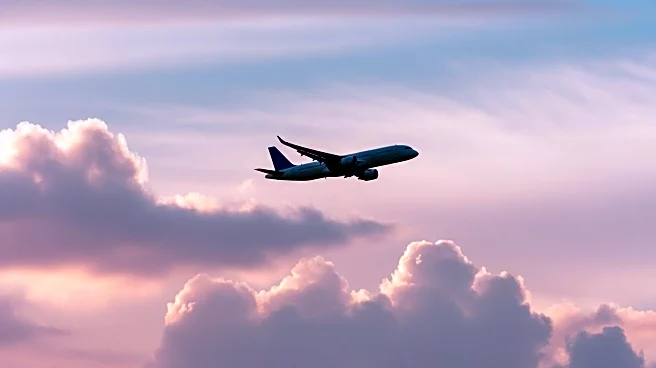
The in-flight announcement to fasten your seat belts due to turbulence can unsettle even the most seasoned flyers. After all, flying inside a rocking vessel thousands of feet above the ground is undeniably nerve-wracking. However, turbulence is a fairly routine phenomenon in the skies, and travelers will experience it at some point.
Passengers may think turbulence is just related to bad weather, but it can also result from other factors. An aircraft might shake due to large mountains, rising clouds,
other airplanes, or even in clear skies. That said, it's not as dangerous as it sounds. While in severe cases, this unstable air can cause structural damage to an aircraft, modern planes are designed to withstand it. As a result, airplane crashes solely due to turbulence are extremely rare, though there have been cases where it has caused injuries or even in-flight deaths. Here are all the reasons that could jolt a massive commercial airliner in the air.
Read more: 10 Airplanes That Managed To Fly With Staggeringly Low Horsepower
There's More Than Just One Type Of Turbulence

Jet streams are natural bands of fast-moving winds at around 30,000 feet or more above the ground. Planes often fly with these jet streams whenever possible to gain up to 150 knots of extra ground speed and save fuel, much like rowing a boat downstream. However, flying with a jet stream can also cause turbulence if the airplane encounters a strong wind shear. The situation can feel contradictory to the passengers, as the plane can severely jolt despite clear weather outside, giving it the name clear air turbulence.
Rising warm air, also known as thermals, can form clouds that jolt an airplane midair. In some cases, they become large storm clouds that cause a severe form of turbulence known as thermal turbulence. Pilots take note of these types of conditions beforehand and create flight plans to avoid this extreme weather. Air traffic control also helps the pilots stay away from thermal turbulence while flying. Turbulence can also occur when mechanical factors such as buildings, trees, and more block the wind. The wind can then form vortices after hitting these structures and rise up. The effect is further amplified around large structures like mountains, and the resulting vortices can shoot up thousands of feet into the sky. Pilots usually confirm their presence before entering the affected airspace and change course accordingly.
Wake turbulence is a type of air instability caused by other airplanes. The air exiting the wing tips forms vortices proportional to the aircraft's size, and planes immediately behind it can experience turbulence as a result. Steering the airplane a few hundred feet away from these vortices is enough to avoid them. Apart from these, thunderstorms and temperature inversion layers can also cause turbulence.
Severe Turbulence Has Caused In-Flight Injuries In The Past

Planes are rigorously tested for operability under extreme temperatures and humidity, and lightning strikes to ensure they can handle the most severe weather conditions. Additionally, airplane wings can bend during bad weather to avoid structural damage. While a commercial airliner won't fall out of the sky due to turbulence, sometimes it can be severe enough that it can be dangerous in other ways. Sudden and severe turbulence can cause the plane to drop violently and injure the people on board.
An incident like this occurred when a Singapore Airlines flight from London to Singapore encountered severe turbulence on May 21, 2024. The plane suddenly dropped 177 feet in just four seconds, throwing passengers against the Boeing 777's ceiling. The pilots made an emergency landing at Bangkok's Suvarnabhumi International Airport, and over a hundred people required medical attention. Several of them were seriously injured, and a 73-year-old British man even died due to a heart attack following the incident. While pilots usually warn passengers to fasten their seatbelts when a plane is expected to experience turbulence, sometimes it's unexpected and severe. The seatbelt is your best defense, and keeping it fastened throughout the journey should protect you against most sudden drops caused by this unstable air.
Want the latest in tech and auto trends? Subscribe to our free newsletter for the latest headlines, expert guides, and how-to tips, one email at a time.
Read the original article on SlashGear.












